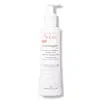What's inside
What's inside
 Key Ingredients
Key Ingredients

No key ingredients
 Benefits
Benefits

 Concerns
Concerns

 Ingredients Side-by-side
Ingredients Side-by-side

Water
Skin ConditioningDicaprylyl Carbonate
EmollientGlycerin
HumectantPentylene Glycol
Skin ConditioningC14-22 Alcohols
Emulsion StabilisingBehenyl Alcohol
EmollientHydrogenated Vegetable Oil
EmollientSodium Stearoyl Glutamate
CleansingC12-20 Alkyl Glucoside
EmulsifyingCitric Acid
BufferingParfum
MaskingGlyceryl Caprylate
EmollientGlycine Soja Oil
EmollientSclerotium Gum
Emulsion StabilisingSodium Benzoate
MaskingTocopherol
AntioxidantXanthan Gum
EmulsifyingWater
Skin ConditioningC12-15 Alkyl Benzoate
AntimicrobialCaprylic/Capric Triglyceride
MaskingPoloxamer 188
Emulsifying4-T-Butylcyclohexanol
MaskingAcrylates/C10-30 Alkyl Acrylate Crosspolymer
Emulsion StabilisingBenzoic Acid
MaskingC12-20 Alkyl Glucoside
EmulsifyingC14-22 Alcohols
Emulsion StabilisingCarbomer
Emulsion StabilisingChlorphenesin
AntimicrobialDisodium EDTA
Octyldodecanol
EmollientPongamia Glabra Seed Oil
Skin ConditioningSodium Hydroxide
Buffering
 Reviews
Reviews

Alternatives
Ingredients Explained
These ingredients are found in both products.
Ingredients higher up in an ingredient list are typically present in a larger amount.
We don't have a description for C12-20 Alkyl Glucoside yet.
C14-22 Alcohols is made up of synthetic fatty alcohols. More specifically, these fatty alcohols contain 14 to 22 carbons in the alkyl chain.
Its main purpose is to stabilize products. As an emulsifier, it helps prevent waters and oils from separating.
Due to this ingredient having a similar composition to cetearyl alcohol, this ingredient may not be Malassezia folliculitis safe.
Learn more about C14-22 AlcoholsWater. It's the most common cosmetic ingredient of all. You'll usually see it at the top of ingredient lists, meaning that it makes up the largest part of the product.
So why is it so popular? Water most often acts as a solvent - this means that it helps dissolve other ingredients into the formulation.
You'll also recognize water as that liquid we all need to stay alive. If you see this, drink a glass of water. Stay hydrated!
Learn more about Water